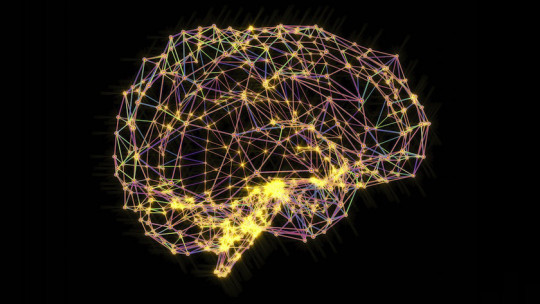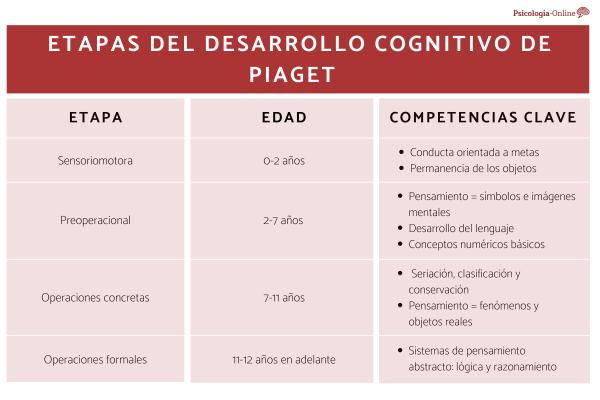When we combine the terms Cognition and Ergonomics We do this to indicate that our objective is to study the cognitive aspects of interaction between people, work system and artifacts that we find in it, with the aim of designing them so that the interaction is effective. Cognitive processes such as perception, learning or problem solving play an important role in interaction and must be considered to explain cognitive tasks, such as information search and interpretation, decision making and problem solving, etc. In Online Psychology we are going to offer you a definition of cognitive ergonomics with examples so you can understand well what we mean when we talk about this term.
What is cognitive ergonomics
The Ergonomics is defined as the scientific discipline that studies the design of systems where people do their work. These systems are called ‘work systems’ and are broadly defined as ‘the sector of the environment on which human work has an effect and from which the human being extracts the information he needs to work’.
The objective of the ergonomist is to describe the relationship between the human being and all the elements of the work system< It is worth highlighting that in the relationship between the person and the work system we can highlight two relatively different aspects:
Physical ergonomics
On the one hand, we have the purely physical aspect that refers to the muscular and skeletal structure of the person. For example, a person working in an office may be sitting (typing on a computer) or standing (making photocopies). The posture in the two situations is different and the design of the workplace has to be done thinking about the characteristics of the structure of the human body so that the person is comfortable, does not get tired, and does not develop any pathology of the spine. , etc.
Physical Ergonomics deals with this aspect and is perhaps the most popular. For example, when a new ‘ergonomically designed’ car is advertised, the slogan usually means that, for example, the height of the steering wheel is adjustable to suit the height of the driver.
Psychological or cognitive ergonomics
However, there is another aspect of the relationship between the person and the work system that refers to how a person knows and acts< In order to perform their task, a person has to perceive stimuli from the environment, receive information from other people, decide what actions are appropriate, carry out these actions, transmit information to other people so they can perform their tasks, etc.
All these aspects are the object of study of Psychological or Cognitive Ergonomics (Cañas and Waern, 2001). In the design of a car, we will be interested in how information is presented to the driver. For example, when designing the speed indicator we can do so using analog or digital indicators. Each indicator has its advantages and disadvantages from the point of view of how the driver perceives and processes speed information.
Although the two aspects, the physical and the psychological, are not totally independent, In Cognitive Ergonomics we are interested in the second and we refer to the first to the extent that it has psychological consequences. For example, if an air traffic controller adopts a certain uncomfortable posture, his fatigue will increase and this will have psychological effects such as reducing his level of alertness.
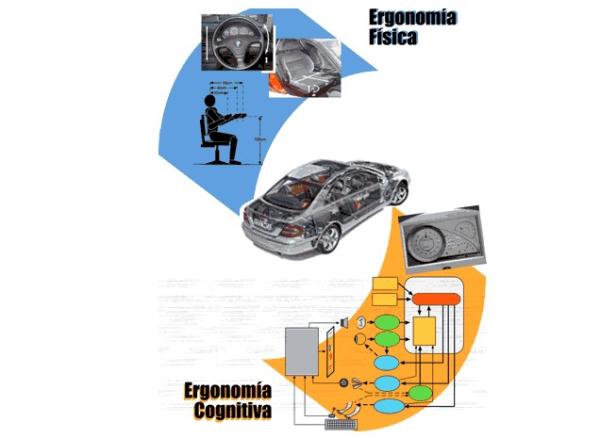
Human errors
An area of application of Cognitive Ergonomics that has a long tradition and that is currently receiving great attention is that of prediction and avoidance of so-called “Human Errors or Failures”<
Many times we are surprised by the news of a tragic accident, such as when a train derails, causing the death of a large number of people. These accidents occur when a machine (e.g. a train), which is being controlled by a person (e.g. the driver), behaves inappropriately (e.g. derails). Therefore, in the first steps of the investigation, technicians focus their attention on the possible existence of a technical fault. However, it often happens that after a thorough examination of the machine, no malfunction of its components is found. Then, they shift their attention to the other possible person responsible for the accident, the person who controlled the machine.
Unfortunately, the first thing that jumps to the front pages of the press is the suspicion that this person had altered physical or mental conditions. For this reason, doctors, under the orders of an investigating judge, begin to carry out analysis, looking for traces of alcohol, drugs or any other substance that justify abnormal behavior. However, the confusion of technicians and the public becomes evident when these analyzes also reveal nothing. The person who controlled the machine was in perfect physical and mental condition. What happened then?
Often, at this point we hear that “the accident was due to human error.” That is, the person who controlled the machine, in perfect health, has made an incomprehensible mistake< Obviously, the possibility that the error was intentional is ruled out. Nobody wants to crash into a train. Therefore, the question that remains is why did he make the mistake? It is not enough to classify the accident as due to human error or failure.
Human errors in cognitive ergonomics
In Cognitive Ergonomics we take as a starting point the definition of human error that has been proposed by Reason (1992) who considers it as ‘a generic term used to designate all those occasions in which a planned sequence of mental or physical activities fails to achieve its intended result, and when these failures cannot be attributed to the intervention of some random factor ‘.
In similar terms, Sanders and McCormick (1993) define human error as ‘an inappropriate or undesirable human decision or behavior that reduces, or has the potential to reduce, the effectiveness, security, or performance of the system’.
In any case, Human error is a failure to perform a task satisfactorily and that cannot be attributed to factors that are beyond the immediate control of human beings. To understand why a person makes a mistake we must begin by considering that controlling a machine means establishing communication between it and the person. From this point of view, the machine must have means of transmitting to the person its internal state.
The importance of machine design
Thus, when the engineer builds it, he designs panels with all kinds of indicators (dials, screens, etc.) designed to offer all the information that the operator will need to control it correctly. Furthermore, since this communication occurs within a physical environment in which the machine operates, signals are also designed that present information about the external conditions in which it works.
Finally, the communication between person and machine It almost always occurs in situations in which other people and other machines are involved. Communication between all of them is established through technical means designed so that the information is received and processed correctly by the person who needs it.
For all this, for many years it has been recognized that the cause of these human errors often has to be found in a possible poor design of the machine, of the information signals or of the means of communication between people.
Interface Design
Thus considered the design, the most important component of the machine for a cognitive ergonomist It is the interface with which the operator interacts< In a simple way, we can say that an interface is the “medium” through which the person and the machine communicate. This communication is established in both directions. Therefore, when talking about an interface we must include the means by which the machine presents information to the person and the means by which the person enters information into the machine.
The number of input and output devices that are available on current interfaces is so large that it is not possible to classify them in an easy way. However, since computer technology has been introduced into almost all machines currently designed, interface design is fundamentally studied within an area of modern Cognitive Ergonomics called ‘Human-Computer Interaction’.
The progress we are seeing in interface design is currently so rapid that it is forcing cognitive ergonomists to investigate interaction in new contexts for human beings. For example, we are moving from interacting with personal computers that have a screen, a keyboard and a mouse, to virtual interfaces where input and output devices will allow interaction experiences that can surpass the natural capabilities of human beings.
With the personal computer The interaction occurs through the senses of sight and hearing fundamentally. However, in virtual reality environments, humans can interact with machines, for example, through the vestibular sense that informs the brain about the balance of the human body.
Thus, Cognitive Ergonomics is currently facing challenges new approaches to apply Psychology and Neuroscience research to the design of interfaces so that they are adapted to the conditions in which human work is carried out.
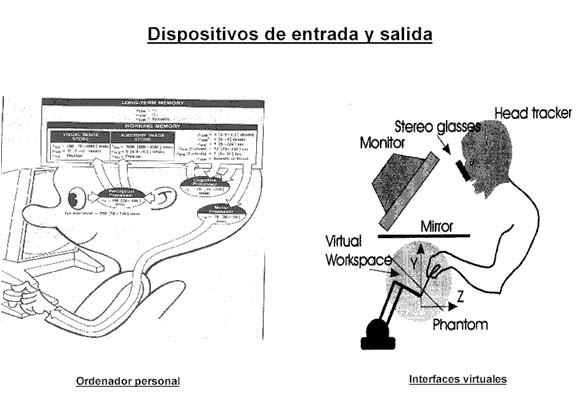
Process control systems
The design of industrial process control systems is an area where cognitive ergonomists usually work and can help us illustrate the importance of interface design in the context of the prevention and avoidance of human errors.
In the energy transformation and chemical manufacturing industry, process chains occur that have to be controlled by humans through artifacts that serve to present information and act on the operations that are occurring inside and outside the industrial complex. The interaction of the people in charge of this control with the devices generally occurs within the so-called operations control rooms. In these control rooms we can find a good example of the importance that good interface design has from the point of view of predicting and avoiding human errors.
The task of a person in a process control room is to supervise what is happening, intervene when required, know the state of the system, reprogram it, take control of automated processes when necessary and plan future actions in the short and long term. (Sheridan, 1997). All these functions refer to human cognitive processes whose correct operation depends on a good design of human-machine interaction.
To make supervision possible interfaces need to present information about the state of the system in such a way that it can be attended to, perceived, understood, memorized, etc. For example, we know from psychological research on eye movements that they do not occur at a speed of more than two per second. Therefore, it is not advisable to present information at a rate that exceeds this speed (Vicente, 1999).
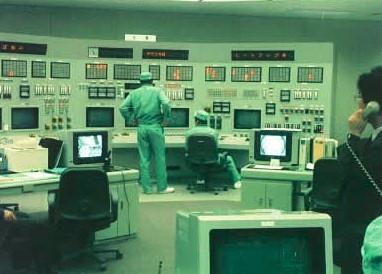
The phenomenon of complacency
However, when an accident occurs, it is the human being who has to take control over the process by interacting with the artifacts directly. Even under normal conditions it is recommended that operations not leave everything in the hands of automatic systems because it has been shown that then we can encounter a phenomenon known as complacency (Parasuraman and Riley, 1997). This phenomenon occurs when the person trusts too much in the proper functioning of the automatic system and stops supervising (interacting) the process, in such a way that when the problem appears it does not detect the need to intervene.
For this reason, the design of control rooms has undergone a change in philosophy in recent years that is in line with recognize the importance of human-computer interaction and, therefore, the contribution of Cognitive Ergonomics in this context.
In the classic conception, control rooms were designed thinking that the machines should be automatic and the person should only act when the accident occurs. However, it is now thought that the design of these rooms should be done from a conception based on the strategy that Zwaga and Hoonhout (1994) called supervision through conscious knowledge of the situation.
Perception of elements in the environment
Whenever a person is in a situation, anyone has knowledge of what is happening in their environment. Even when we are sitting doing nothing we have information about everything that is happening around us. However, when we have to carry out a complex task like the one carried out in a control room, it is necessary for us to process a huge set of data about what is happening inside and outside it. All this Information must be attended to, retained, interpreted and used to make decisions necessary for the industrial process to progress correctly.
All of this is called acquiring, processing and using Situational Awareness, which has been defined as “the perception of elements in the environment within a volume of time and space, the understanding of their meaning and the projection of their meaning.” state in the near future” (Endsley, 1995).
In many of the application domains of Cognitive Ergonomics, such as air traffic control, aircraft piloting, or the control of a nuclear or thermal power plant, ergonomists have needed to use this concept to describe and integrate all cognitive processes who are responsible for the acquisition, storage and use of the information that is available so that the person can perform the work in them and, in this way, help the design of the work system to be appropriate for the human being, improving its well-being and avoiding feared human errors.
Conclusion
The importance that Ergonomics is currently acquiring as a scientific discipline that can contribute to improve human well-being It requires that we make an effort to well define its object of study. In this sense, in this work we wanted to draw attention to the two aspects, the physical and the psychological, which are important to differentiate in the relationship between the human being and the system where they work and which give rise to distinguishing two subdisciplines within Ergonomics. : Physics and Cognitive.
This article is merely informative, at PsychologyFor we do not have the power to make a diagnosis or recommend a treatment. We invite you to go to a psychologist to treat your particular case.
If you want to read more articles similar to Cognitive ergonomics: definition and examples we recommend that you enter our Cognitive Psychology category.
This article was originally published in Alta Direction: Cañas, JJ (2003). Cognitive Ergonomics. Senior Management, Vol. 227, 66-70
Bibliography
- Cañas, JJ, and Waern, Y. (2001). Cognitive Ergonomics. Madrid: Panamericana Medical Editorial.
- Endsley, M. (1995a). Toward a Theory of Situation Awareness in Dynamic Systems. Human Factor, 37 (1), 32-64.
- Miller, G. A. (1956). The magical number seven plus or minus two: Some limits on our capacity for processing information. Psychological Review, 63, 81-97.
- Parasuraman, R. and Riley, V. (1997). Humans and automation: Use, misuse, disuse, abuse. Human Factors, 39, 230-253.
- Reason, J. (1992). HumanError. New York: Cambridge University Press.
- Sanders, M.S., and McCormick, E.J. (1993). Human Factors in Engineering and Design. McGraw-Hill, Inc.
- Sheridan, T. B. (1997). Supervisory control. In G.Salvendy (ed.) Handbook of Human Factors. New York: Wiley.
- Vicente, KJ (1999). Cognitive work analysis: Toward Safe, Productive and Healthy Computer-based Work. Marwah: READ.
- Zwaga, H.J.G., and Hoonhout, H.C.M. (1994). Supervisory control behavior and the implementation of alarms in process control. In N. A. Stanton (ed.) Human Factors in Alarms Design: London: Taylor and Francis.






